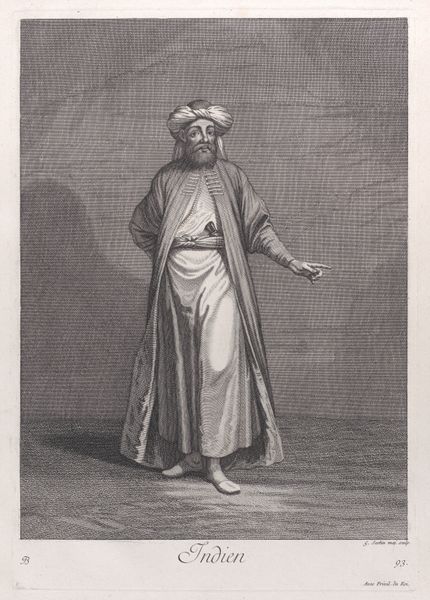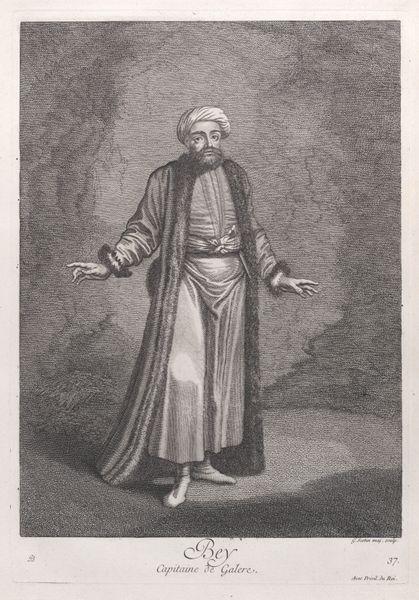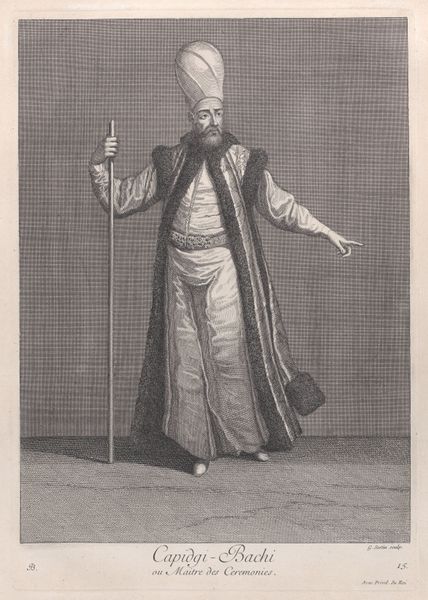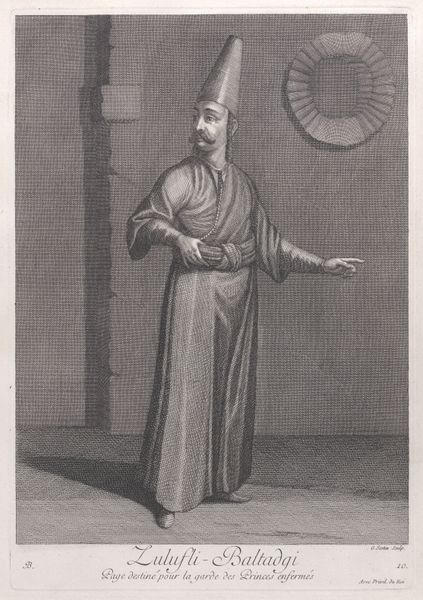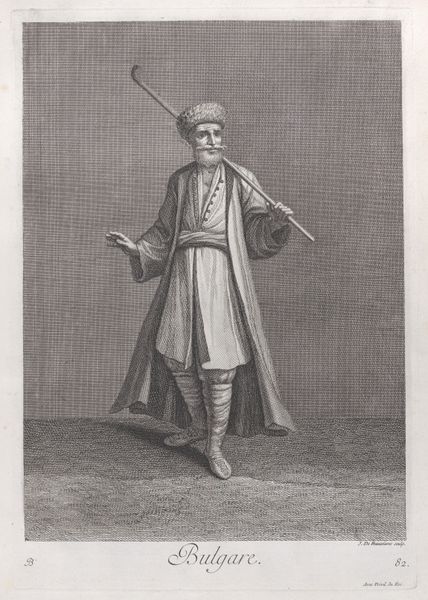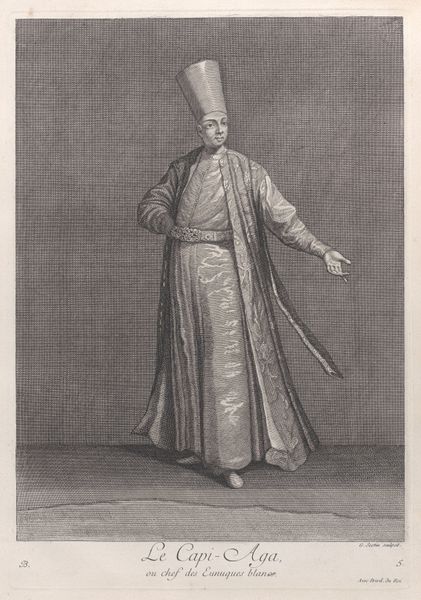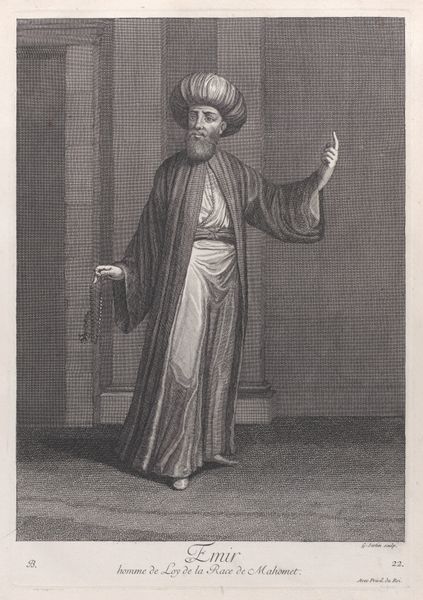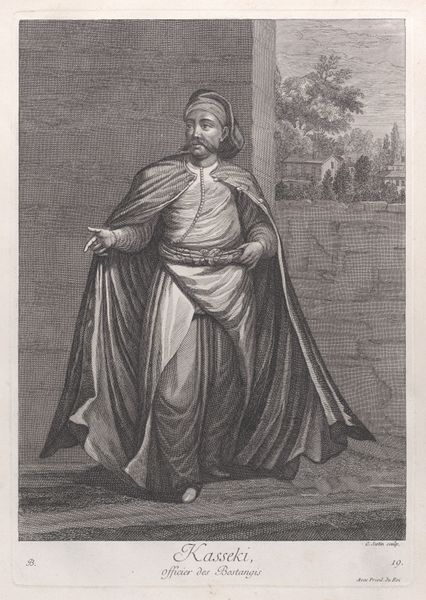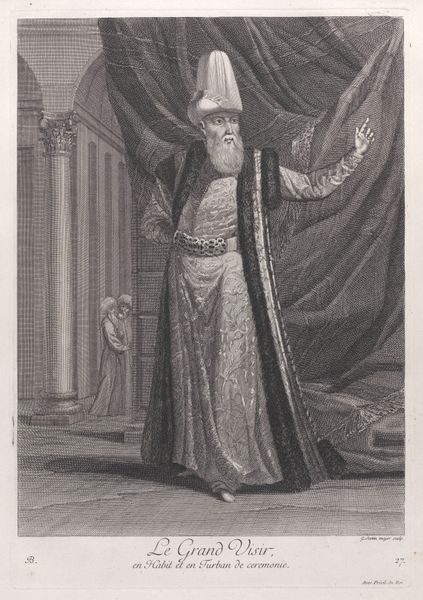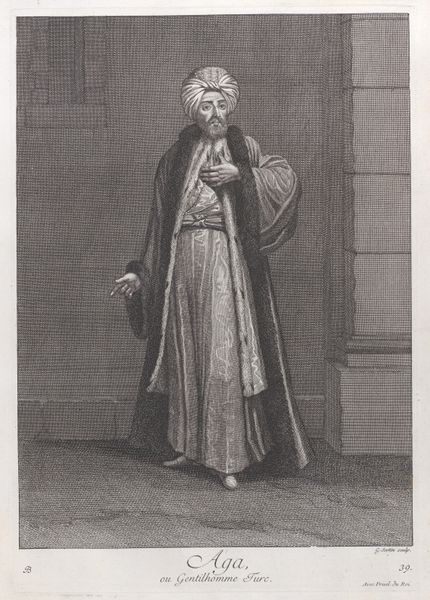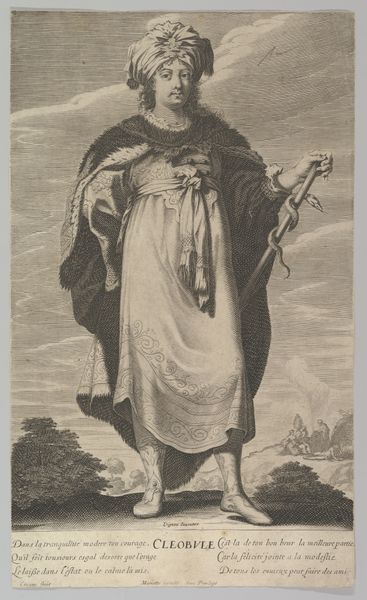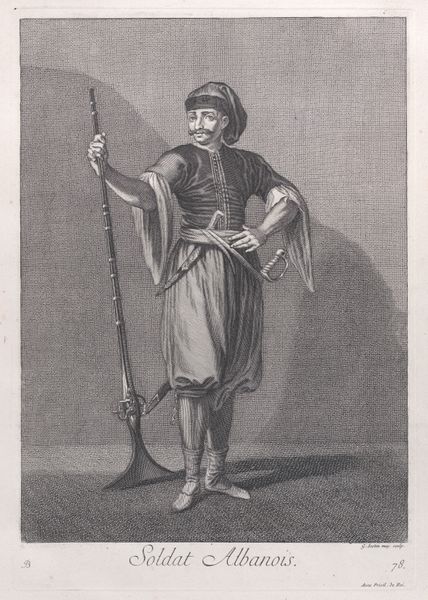
Dervich, des Indes, plate 92 from "Recueil de cent estampes représentent differentes nations du Levant" 1714 - 1715
0:00
0:00
drawing, print, engraving
#
portrait
#
drawing
#
baroque
# print
#
orientalism
#
men
#
engraving
Dimensions: Sheet: 16 9/16 × 11 15/16 in. (42 × 30.4 cm) Plate: 14 3/16 × 9 13/16 in. (36 × 24.9 cm)
Copyright: Public Domain
Jean Baptiste Vanmour created "Dervich, des Indes" as part of a series exploring different nations of the Levant. The print primarily uses hatching to model light and form. The dervish is centrally placed; his figure is constructed with vertical lines that suggest a certain monumentality, while the shading gives volume to his robes and features. Consider how Vanmour uses line and shadow to define not just the figure, but also the cultural context. The stark contrast between light and shadow flattens the background, pushing the dervish forward and emphasizing his presence. This technique is not merely decorative; it serves to highlight the dervish as an object of scrutiny within the European gaze. Note the way the texture of the fabrics is suggested through varied densities of line. This is an example of semiotic coding, wherein visual elements convey deeper cultural meanings. Vanmour's print becomes a site for examining power dynamics inherent in representation and cultural exchange.
Comments
No comments
Be the first to comment and join the conversation on the ultimate creative platform.
